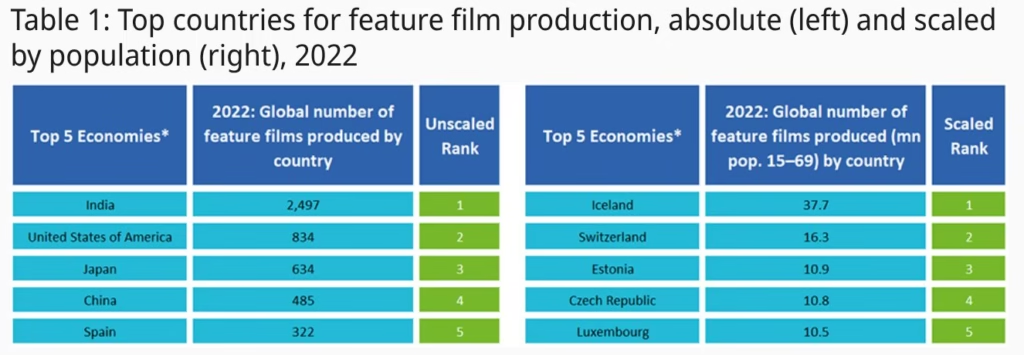



Images of Excellent Films from 2024 (following our criteria…)
Rent or buy THE LAST YEAR OF DARKNESS Amazon
I. The Crumbling Colossus
The Academy Awards, once a beacon of cinematic achievement, now stand as a monument to a bygone era. The golden statuette, once a symbol of artistic aspiration, has become a gilded cage, limiting our understanding of what cinema can truly be. The spectacle, carefully curated and relentlessly promoted, serves to obscure a more fundamental truth: that the vast and diverse world of film is increasingly marginalized by a USA Hollywood-centric narrative that has lost its relevance. This isn’t merely a critique of the Oscars; it’s an examination of the power structures that dictate what stories are seen, heard, and celebrated. We are not simply asking whether the Oscars represent world cinema; we are questioning the very notion of a single, monolithic “world cinema” and the homogenizing effect of a narrative so deeply entrenched in a specific cultural perspective. The future of cinema isn’t about inclusion within the Academy’s framework, it is about a radical dismantling of it, a move towards a decentralized and truly global vision.

II. The Architecture of Exclusion: Deconstructing the Oscar Machine
The Colonial Echoes of the Academy
To understand the Academy’s limitations, we must delve into its historical roots, recognizing that its founding was not simply about honoring art, but about consolidating power within the nascent Hollywood system. The early years of the Academy were marked by a blatant bias towards the studio system and a conscious marginalization of independent and foreign films. This bias has persisted, albeit in more subtle forms, throughout its history. The Academy, in its very structure, reflects the echoes of cultural colonialism, creating a hierarchy where Hollywood is placed at the apex, and other cinematic traditions are relegated to the periphery. This isn’t simply a matter of overlooking foreign films; it’s a system that actively devalues and re-contextualizes non-American narratives through a specific Western lens, ultimately distorting their meaning and impact. The very language used, the emphasis on technical prowess as opposed to socio-political resonance, is reflective of this colonial mindset.
Oscars 2025: A Predictable Tableau:
Consider the likely contours of the 2025 Oscar nominations. We’ll see a familiar landscape: a preponderance of English-language films produced in Hollywood, narratives centered on American (or Westernized) perspectives, and a strong emphasis on established stars and familiar tropes. Even when “international” films are recognized, they often conform to a pre-approved formula of art-house respectability, sanitized to appeal to Western audiences. The categories become a game of tokenism, a carefully curated display of diversity that avoids challenging the underlying structure. This performative inclusion only serves to reinforce the very system it purports to be expanding. The Oscars do not celebrate global cinema; they curate it, filtering and selecting based on predetermined metrics of what constitutes acceptable artistry. This curated process ensures the maintenance of the status quo. They don’t represent the best cinema produced in a year, but the american film industry vision. And now, that’s a vague and too partial vision of the world’s cinematographic panorama.
Oscar Nominees 2025: A Case Study
Before diving deeper into global cinema, let’s pause and examine what we might expect from the upcoming 2025 Academy Awards. This list serves as an illustration of the Academy’s limitations. It’s a snapshot of a familiar landscape, offering a stark contrast to the vibrant world of cinema that lies beyond the Hollywood gaze.
2025 Academy Awards Nominations
Best Picture
- “Anora” (Neon)
- “The Brutalist” (A24)
- “A Complete Unknown” (Searchlight)
- “Conclave” (Focus)
- “Dune: Part Two” (Warner Bros.)
- “Emilia Pérez” (Netflix)
- “I’m Still Here” (Sony Classics)
- “Nickel Boys” (Amazon/MGM)
- “The Substance” (Mubi)
- “Wicked” (Universal)
Best Director
- Sean Baker, “Anora”
- Brady Corbet, “The Brutalist”
- James Mangold, “A Complete Unknown”
- Jacques Audiard, “Emilia Pérez”
- Coralie Fargeat, “The Substance”
Best Actress
- Cynthia Erivo, “Wicked”
- Karla Sofia Gascón, “Emilia Pérez”
- Mikey Madison, “Anora”
- Demi Moore, “The Substance”
- Fernanda Torres, “I’m Still Here”
Best Actor
- Adrian Brody, “The Brutalist”
- Timothée Chalamet, “A Complete Unknown”
- Colman Domingo, “Sing Sing”
- Ralph Fiennes, “Conclave”
- Sebastian Stan, “The Apprentice”
Best Supporting Actress
- Monica Barbaro, “A Complete Unknown”
- Ariana Grande, “Wicked”
- Felicity Jones, “The Brutalist”
- Isabella Rossellini, “Conclave”
- Zoe Saldaña, “Emilia Pérez”
Best Supporting Actor
- Yura Borisov, “Anora”
- Kieran Culkin, “A Real Pain”
- Edward Norton, “A Complete Unknown”
- Guy Pearce, “The Brutalist”
- Jeremy Strong, “The Apprentice”
Best Original Screenplay
- “Anora,” Sean Baker
- “The Brutalist,” Brady Corbet & Mona Fastvold
- “A Real Pain,” Jesse Eisenberg
- “September 5,” Tim Fehlbaum & Moritz Binder
- “The Substance,” Coralie Fargeat
Best Adapted Screenplay
- “A Complete Unknown,” Jay Cocks & James Mangold
- “Conclave,” Peter Straughan
- “Emilia Pérez,” Jacques Audiard, Thomas Bidegain & Nicolas Livecchi
- “Nickel Boys,” RaMell Ross & Joslyn Barnes
- “Sing Sing,” Clint Bentley, Greg Kwedar, Clarence Maclin & John “Divine G” Whitfield
Best International Feature
- “I’m Still Here,” Walter Salles (Brazil)
- “The Girl with the Needle,” Magnus von Horn (Denmark)
- “Emilia Pérez,” Jacques Audiard (France)
- “The Seed of the Sacred Fig,” Mohammad Rasoulof (Germany)
- “Flow,” Miguel Gomes (Latvia)
Best Documentary Feature
- “Black Box Diaries,” Shiori Itō (MTV)
- “No Other Land,” Basel Adra, Hamdan Ballal, Yuval Abraham & Rachel Szor (No distributor)
- “Porcelain War,” Brendan Bellomo & Slava Leontyev (Picturehouse)
- “Soundtrack to a Coup d’Etat,” Johan Grimonprez (Kino Lorber)
- “Sugarcane,” Julian Brave NoiseCat & Emily Kassie (Nat Geo)
Best Animated Feature
- “Flow” (Janus Films/Sideshow)
- “Inside Out 2” (Disney/Pixar)
- “Memoir of a Snail” (IFC Films)
- “Wallace & Gromit: Vengeance Most Fowl” (Aardman/Netflix)
- “The Wild Robot” (Dreamworks/Universal)
Best Cinematography
- “The Brutalist,” Lol Crawley
- “Dune: Part Two,” Greig Fraser
- “Emilia Pérez,” Paul Guillaume
- “Maria,” Edward Lachman
- “Nosferatu,” Jarin Blaschke
Best Costume Design
- “A Complete Unknown,” Arianne Phillips
- “Conclave,” Lisy Christl
- “Gladiator II,” Janty Yates
- “Nosferatu,” Linda Muir
- “Wicked,” Paul Tazewell
Best Film Editing
- “Anora,” Sean Baker
- “The Brutalist,” Dávid Jancsó
- “Conclave,” Nick Emerson
- “Emilia Pérez,” Juliette Welfling
- “Wicked,” Myron Kerstein
Best Production Design
- “The Brutalist,” Judy Becker
- “Conclave,” Suzie Davies
- “Dune: Part Two,” Patrice Vermette
- “Nosferatu,” Craig Lathrop
- “Wicked,” Nathan Crowley
Best Original Score
- “The Brutalist,” Daniel Blumberg
- “Conclave,” Volker Bertelmann
- “Emilia Pérez,” Clément Ducol & Camille
- “Wicked,” John Powell & Stephen Schwartz
- “The Wild Robot,” Kris Bowers
Best Original Song
- “Never Too Late,” “Elton John: Never Too Late” (Elton John & Brandi Carlile)
- “El Mal,” “Emilia Pérez” (Clement Ducol, Camille & Jacques Audiard)
- “Mi Camino,” “Emilia Pérez” (Clement Ducol & Camille)
- “Like a Bird,” “Sing Sing” (Adrian Quesada & Abraham Alexander)
- “The Journey,” “The Six Triple Eight” (Diane Warren)
Best Sound
- “A Complete Unknown”
- “Dune: Part Two”
- “Emilia Pérez”
- “Wicked”
- “The Wild Robot”
Best Visual Effects
- “Alien: Romulus”
- “Better Man”
- “Dune: Part Two”
- “Kingdom of the Planet of the Apes”
- “Wicked”
Best Makeup and Hairstyling
- “A Different Man”
- “Emilia Pérez”
- “Nosferatu”
- “The Substance”
- “Wicked”
Best Documentary Short
- “Death by Numbers”
- “I Am Ready, Warden”
- “Incident”
- “Instruments of a Beating Heart”
- “The Only Girl in the Orchestra”
Best Animated Short
- “Beautiful Men”
- “In the Shadow of the Cypress”
- “Magic Candies”
- “Wander to Wonder”
- “Yuck!”
Best Live-Action Short
- “A Lien”
- “Anuja”
- “I’m Not a Robot”
- “The Last Ranger”
- “The Man Who Could Not Remain Silent”

III. The Predominance of Familiar Narratives and Predictable Choices
- Hollywood Comfort Zone: The Best Picture nominations, while showcasing a range of genres, mostly adhere to familiar Hollywood tropes. “The Brutalist,” with its A24 label, promises a certain level of arthouse credibility but still operates within the parameters of a specific aesthetic. “Dune: Part Two,” is a studio-backed sequel, heavy on spectacle, while “Wicked” is a high-budget musical adaptation based on already known material. “Nickel Boys” and “A Complete Unknown,” based on familiar storylines, are designed for critical acclaim within a safe narrative. Even “Anora,” with its Neon label, seems to be packaged as a “challenging” film within a specific, established arthouse mold. In any case, if we were the jury, we would probably vote for “Anora”. This selection reinforces a cycle of celebrating established trends rather than embracing genuine innovation.
- Limited International Vision: While “Emilia Pérez” from France and “I’m Still Here” from Brazil are nominated for Best International Feature and get some representation in other categories, their presence feels like tokenism within a larger, anglocentric-USA narrative. They are essentially the “safe picks”, internationally speaking, that still manage to conform to Western sensibilities. This limited focus on international films marginalizes a multitude of diverse and powerful cinematic voices emerging from regions often overlooked by the Academy. It reinforces the notion that international cinema is only worthy of recognition if it fits within the parameters set by Western artistic standards. Of course, this are the American Academy Prizes, but in today’s cinematography, so globalized and with lots of production centers around the world, getting an Oscar has less significance and does not mean anything in comparison with the S.XX.
- Genre Limitations: The overall list reveals a narrow focus on dramas, biopics, and genre flicks that are presented in a certain light. There is a notable absence of films that challenge genre conventions, offer unique perspectives on storytelling, or experiment with cinematic form. Important genres within global cinema such as social realism, political thrillers, or magical realism, that are often at the core of different cinema traditions, are marginalized or completely absent, indicating an unwillingness to engage with different ways of storytelling. Industry value over artistic quality is a must to get an Oscar.
II. Questionable Choices in Key Categories
- Best Director – A Lack of Risk: The Best Director nominations primarily include directors who are already established within the Hollywood system, despite some of them coming from different backgrounds, creating the illusion of a diverse selection when, in fact, the work is still created under the established guidelines. The list doesn’t include directors who have significantly pushed the boundaries of cinematic language or explored truly innovative ways of storytelling. They are “safe” choices that avoid challenging the underlying structures of the industry. The absence of more experimental or avant-garde filmmakers highlights the Academy’s aversion to risk.
- Acting Categories – Performance over Authenticity: The nominations in the acting categories, while featuring talented performers, seem to prioritize recognizable names and established actors over truly authentic portrayals of diverse characters. For example, the choice of Cynthia Erivo and Ariana Grande in “Wicked” feels like a star-driven move rather than a selection based on merit. These selections favor well-known individuals instead of engaging with less known actors and more authentic storytelling experiences.
- Screenplay and Technical Categories – Conformity to Existing Conventions: Even in the technical categories, such as cinematography, film editing, and production design, many of the nominees appear to conform to established Hollywood aesthetic conventions. While the selected work is certainly well-crafted, it does not challenge existing standards of excellence. There seems to be a reluctance to reward works that push technical boundaries or use innovative approaches to storytelling, favoring “polished” and predictable results.

III. The Absence of Key Global Cinematic Voices
- Marginalization of Specific Film Industries: The list’s most glaring flaw is its marginalization of entire cinematic traditions. There’s a noticeable absence of nominations for films from South Korea, Africa, Latin America, and specific parts of Asia that are not part of the “mainstream.” This reinforces the Academy’s bias towards Western perspectives and its disinterest in the diverse approaches to storytelling present in non-Western cinema, even when considering non-USA produced films,.
- Ignoring Socially and Politically Engaged Cinema: The nominated films, even when exploring serious issues, often do so through a Western lens, lacking the social urgency or political engagement that defines much of global cinema. Important topics such as poverty, colonial legacy, or social inequality, that often serve as central pieces for many films coming from specific parts of the world are reduced to the context of a specific story that feels distant and disconnected, as opposed to embracing it as a central discussion point. This tendency undermines the capacity of cinema to act as a form of resistance, commentary, and social engagement.
- Failure to Acknowledge Experimental and Avant-Garde Works: The nominated selection is completely devoid of films that challenge narrative conventions or experiment with cinematic form. There’s a clear bias against avant-garde or experimental cinema, perpetuating a notion of “quality” that does not include the full spectrum of what cinema is able to achieve.
IV. The Limitations of the Academy’s Lens
- Industry-Driven Choices: The overall impression is that the nominees are driven more by industry dynamics and market appeal rather than true artistic merit. This underscores how power structures within Hollywood influence the Academy’s selection process. The need to be commercially viable and to reach a specific audience limits the range of films that are able to get attention, creating a cycle where the same type of stories keep getting celebrated.
- The Perpetuation of the Status Quo: The provided list, in its essence, does little more than perpetuate the status quo, reinforcing the dominance of Hollywood and the marginalization of global cinematic voices. It demonstrates the Academy’s ongoing failure to truly understand or appreciate the diversity and dynamism of cinema being produced outside of the established American film industry, becoming a biased and unreliable source of judgment.
This list of nominees for the 2025 Academy Awards serves as a clear example of why the Oscars should not be regarded as a reference point for the best cinema produced in 2024. It highlights the Academy’s narrow focus, a Hollywood-centrist cinema vision, its bias towards familiar narratives, its marginalisation of global cinematic voices, and its overall failure to engage with the diverse and dynamic world of cinema. This is not a reflection of “the best” but a curated selection based on particular rules. It reinforces the need to look beyond the Oscars to appreciate the true power, potential, and diversity of cinema, and to engage with a much wider universe of films and a much more complex understanding of art.
III. The Unseen World: Resisting the Hollywood Gaze
Global Cinema as Resistance
The truly groundbreaking cinema emerging from other parts of the world is not simply “alternative”; it’s often a form of active resistance against the dominant Western narrative. The “Korean New Wave”, as a prime example, with directors like Park Chan-wook and Bong Joon-ho, isn’t just crafting genre films; it’s using genre as a tool to dissect the complexities of Korean society, challenging both Western notions of what constitutes “good” storytelling and their very own. Bollywood, beyond the song and dance, is a microcosm of Indian society, grappling with its socio-political realities through powerful narratives. The African cinema renaissance is re-writing the continent’s history, offering perspectives that have been suppressed for generations. Latin American film, steeped in a rich tradition of political allegory, confronts the legacy of colonialism and economic disparity head-on. These cinematic landscapes are not just producing films; they’re crafting new modes of seeing, thinking, and understanding the world.

Beyond the Festival Circuit: The Rise of Decentralized Recognition:
The traditional film festival circuit, while offering a vital alternative to the Oscars, is not without its own limitations. The selection processes at these festivals are still, in many ways, controlled by a relatively small network of curators and critics. The rise of decentralized platforms, online film communities, and independent critics is reshaping the landscape of film recognition. These networks allow for a more democratic approach, where films are discussed and celebrated outside the established hierarchies. This doesn’t necessarily diminish the importance of festivals, but instead points to a more polycentric way of valuing cinematic work, where recognition comes from a multiplicity of sources and perspectives.
The Global Vanguard: Film Festivals Championing Quality over Industry
While the Oscars continue to operate within a Hollywood-centric paradigm, a network of film festivals around the globe serve as a crucial counterpoint, prioritizing artistic merit and genuine cinematic innovation over marketability and industry hype. These festivals provide a platform for emerging voices, challenging films, and unconventional narratives that would likely be overlooked by the mainstream. Here are some of the most important examples:
- Cannes Film Festival (France): Renowned for its discerning selection of auteurs, both established and emerging, and its dedication to showcasing cutting-edge cinematic language.
- Berlin International Film Festival (Germany): Known for its politically engaged programming, highlighting films with a strong social conscience and pushing the boundaries of cinematic representation.
- Venice Film Festival (Italy): A historic festival with a blend of arthouse experimentation and high-profile premieres, often launching the careers of significant international filmmakers.
- Locarno Film Festival (Switzerland): A champion of independent and avant-garde cinema, known for its commitment to discovering new voices and experimental forms.
- Toronto International Film Festival (Canada): While having a portion that caters to a wider audience, it also features a strong selection of international films and provides a platform for filmmakers from around the world.
- Sundance Film Festival (USA): Though located in the US, its focus on independent filmmaking and diverse voices has consistently challenged the mainstream and promoted innovative cinema.
- Rotterdam International Film Festival (Netherlands): A festival dedicated to supporting innovative and challenging cinema from all corners of the globe.
- San Sebastián International Film Festival (Spain): A key showcase for Latin American cinema and an important platform for Spanish and international films.
- Busan International Film Festival (South Korea): The most important platform for discovering emerging talent and innovative cinema from Asia.
- Tokyo International Film Festival (Japan): A key showcase for Japanese cinema and increasingly important for international films, especially from Asia.
- The International Film Festival of Kerala (India): An important platform that promotes challenging and alternative narratives from across the globe.

IV. Reclaiming the Cinematic Language: Towards a Global Aesthetic
Expanding the Vocabulary of Cinema:
To truly understand and appreciate global cinema, we must move beyond the restrictive notions of “quality” that have been imposed by the dominant Western narrative. Storytelling depth is not simply about complex plots; it’s about the emotional and cultural weight that a narrative carries. Cultural authenticity doesn’t mean a mere replication of cultural symbols; it means an exploration of the lived experience of a particular community. Technical innovation should serve the story, not the other way around, and emotional resonance is not a universally fixed concept but a fluid response that varies from culture to culture. Social impact is a vital component to be considered, and the understanding that cinema is more than simple entertainment but rather a complex and potent political tool. The goal is not to impose a single standard but to appreciate the variety of cinematic languages that exist across the world.
The Power of Empathy: Unlocking Global Narratives:
Discovering these global cinema gems is not just about watching films; it’s about developing the capacity for empathy, to engage with stories that may challenge your worldview and provoke discomfort. Streaming platforms are useful starting points, but they’re just one tool in a much wider approach. The most important thing is to cultivate a habit of active viewing. Engage in conversations with others who have different cultural backgrounds and different understanding of cinema, seek out recommendations from critics and communities that are not part of the mainstream, and, if possible, attend local festivals or cultural exchange events. This will create a truly immersive experience that goes beyond passive consumption of film and towards genuine and deeply meaningful engagement.
V. A Manifesto for the Future: A Call to Action
Strategies for Cinematic Liberation:
To break free from the limitations of the Hollywood-centric narrative, we must be more proactive in our engagement with global cinema. We need to consciously seek out films from underrepresented regions and traditions, we need to actively challenge the existing power structures that prioritize specific narratives, we must create and support independent platforms for criticism and discussion, and we should advocate for a more inclusive approach to film education. This is not simply about watching more international films; it’s about changing the way we think about cinema itself, moving beyond a perspective that is centered in one specific cultural point of view and instead engaging with a more diverse and nuanced set of ideas.
A Glimpse into the Future of Global Storytelling:
The most recent generation of filmmakers is already reshaping the global landscape of cinema. New voices, coming from all parts of the world, are producing films that are both deeply personal and profoundly universal. The technical barriers to filmmaking are falling, creating space for new talent to emerge. We should promote and engage with new forms of cinematic expression, as well as experiment with the new possibilities offered by the internet and social media. This is not just about watching films; it’s about building a future for cinema that’s more democratic, inclusive, and globally connected. In this future, the ghosts of Hollywood will finally be exorcized, replaced by a vibrant, polyphonic chorus of voices from around the world.
VI. The Revolution Will Not Be Televised (By the Academy)
The Oscars, in their current form, are not just irrelevant to this global cinema revolution; they are actively a part of the system that needs to be dismantled. True appreciation of cinema requires us to move beyond the limitations of this system and embrace a more complex understanding of its artistic, cultural, and political dimensions. This is not about asking for representation within the existing framework; it’s about building a new framework altogether, where power is decentralized, voices are amplified, and all modes of storytelling are celebrated. The revolution in global cinema isn’t something that will be televised by the Academy; it is a movement happening right now, fueled by the passion and creativity of filmmakers around the world. This revolution requires our active engagement, our willingness to challenge the status quo, and our openness to different ways of seeing and thinking. This is the only way to truly unlock the full potential of cinema as a truly global art form.


Leave a Reply